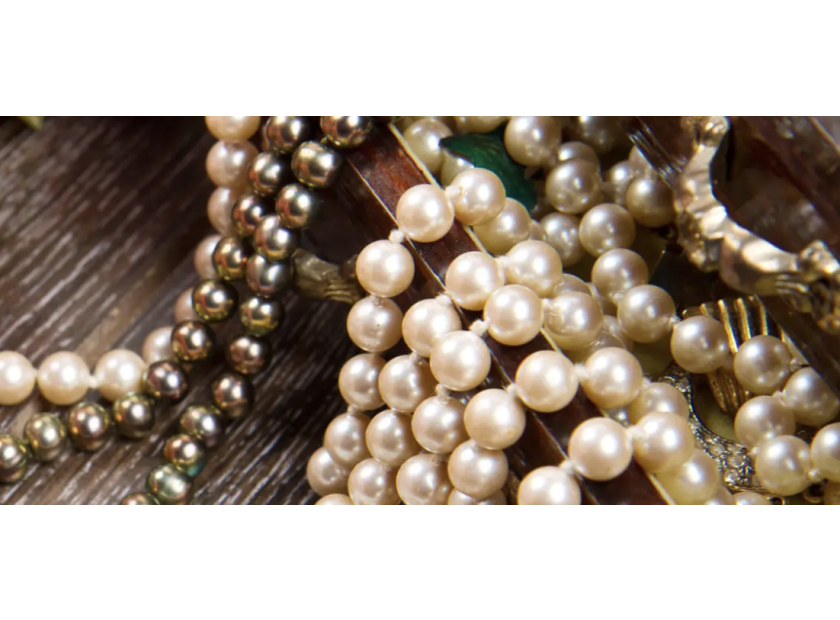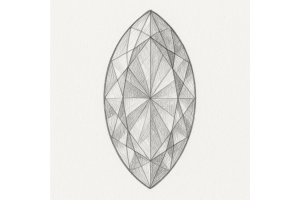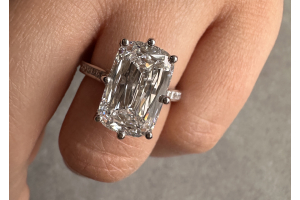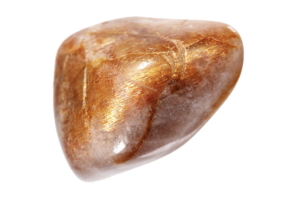GBP
/
GBP
/
Shipping to:
Currency:
How to Care for Your Pearl Jewellery: Expert Tips to Keep Them Radiant
Pearls have long been cherished for their timeless elegance and delicate beauty.
Unlike other gemstones, pearls are organic, formed within living molluscs, which makes them particularly unique and, consequently, in need of special care.
Their soft, porous nature means they're more susceptible to damage from chemicals, abrasion, and environmental factors.
By understanding how to properly care for your pearl jewellery, you can ensure these treasures remain radiant for generations.
Understanding Pearls and Their Delicate Nature
Pearls are distinct from other gemstones due to their organic origin.
Composed of layers of nacre, they possess a soft and porous surface, making them particularly sensitive to chemicals, moisture, and physical wear.
This delicate composition necessitates specific care routines to maintain their lustre and prevent damage.
Daily Practices to Protect Your Pearls
To keep your pearls looking their best, consider the following daily habits:
Last On, First Off:
Always put your pearl jewellery on after applying makeup, perfume, hairspray, and lotions.
These substances can dull the pearl's surface.
Similarly, remove your pearls first when undressing to minimise exposure to potential contaminants.
Avoid Direct Contact with Chemicals:
Household cleaners, chlorinated water, and even perspiration can harm pearls.
It's advisable to remove pearl jewellery before engaging in activities like swimming, cleaning, or exercising.
Regular Wear:
Interestingly, wearing your pearls regularly can benefit them.
Pearls draw moisture from the air and your skin, which helps maintain their lustre.
However, ensure they're the last accessory you put on to minimise exposure to harmful substances.
Cleaning Your Pearl Jewellery Safely
Regular cleaning is essential to maintain the beauty of your pearls:
After Each Wear:
Gently wipe your pearls with a soft, damp cloth to remove any surface oils or residues.
This simple step helps prevent buildup that can dull their shine.
Deeper Cleaning:
For a more thorough clean, use a mild soap mixed with lukewarm water.
Dampen a soft cloth with the solution and gently wipe each pearl.
Avoid submerging pearl necklaces, as this can weaken the silk thread.
After cleaning, rinse with a cloth dampened with clean water and allow the jewellery to air dry completely before storing.
Avoid Harsh Methods:
Never use ultrasonic cleaners, steamers, or abrasive materials on pearls.
These can cause irreversible damage to their delicate surface.
Proper Storage Techniques
How you store your pearls can significantly impact their longevity:
Separate Storage:
Keep pearls separate from other jewellery items to prevent scratches.
Soft pouches or lined jewellery boxes are ideal.
Avoid Airtight Containers:
Pearls need moisture to retain their lustre.
Storing them in airtight containers can cause them to dry out and become brittle.
Lay Flat:
For pearl necklaces, lay them flat to prevent the silk thread from stretching.
Hanging can lead to unwanted elongation over time.
When to Consider Restringing
Over time, the silk thread holding pearl necklaces or bracelets can weaken:
Frequency:
If you wear your pearls often, consider having them restrung annually.
For less frequent use, every two to three years may suffice.
Indicators:
Signs that restringing is needed include stretched threads, gaps between pearls, or discolouration of the thread.
Knotting:
Ensure the jeweller knots between each pearl.
This not only prevents all pearls from scattering if the thread breaks but also prevents them from rubbing against each other.
Common Mistakes to Avoid
To keep your pearls in pristine condition, be mindful of the following:
Exposure to Acids:
Substances like vinegar or lemon juice can erode the pearl's surface.
Always keep pearls away from acidic materials.
Using Toothpaste for Cleaning:
Some believe toothpaste is a gentle cleaner, but it can be abrasive and scratch pearls.
Stick to mild soap and water.
Neglecting Regular Wear:
Storing pearls for extended periods without wearing can cause them to dehydrate.
Regular wear helps maintain their moisture balance.
Choosing Durable Pearl Jewellery
When selecting pearl pieces:
Quality Settings:
Opt for jewellery where pearls are securely set, reducing the risk of them becoming loose or detached.
Protective Designs:
Consider designs that shield pearls from direct impact or abrasion, especially for rings or bracelets that are more prone to knocks.
Frequently Asked Questions About Pearl Care
Can I wear my pearls every day?
Yes, regular wear can be beneficial for pearls as they absorb moisture from the environment and your skin, helping maintain their lustre.
However, ensure they're protected from chemicals and physical damage during daily activities.
What should I do if my pearls get wet?
If exposed to clean water, gently pat them dry with a soft cloth and allow them to air dry completely before storing.
Avoid using heat sources like hairdryers, as excessive heat can damage them.
Are vintage pearls more delicate?
Vintage pearls may have thinner nacre layers due to age and wear, making them more susceptible to damage.
Handle them with extra care and consider consulting a jeweller for specific maintenance advice.
How can I restore the shine to my pearls?
Regular gentle cleaning and proper storage can help maintain and restore a pearl's shine.
If they appear particularly dull, consult a professional jeweller for specialised cleaning.
Is it safe to use commercial jewellery cleaners on pearls?
Most commercial jewellery cleaners are too harsh for pearls.
It's best to use a mild soap and water solution or products specifically formulated for pearl care.
For those interested in exploring other exquisite jewellery options, consider checking out gemstone engagement rings for a vibrant alternative.
Additionally, non-traditional engagement rings offer unique designs that stand out.
If you're contemplating between different gemstones, our guide on lab-grown diamonds vs gemstones can assist in making an informed decision.








